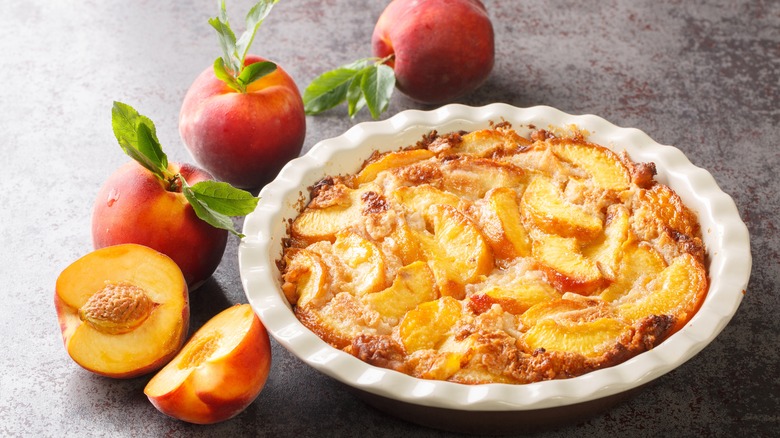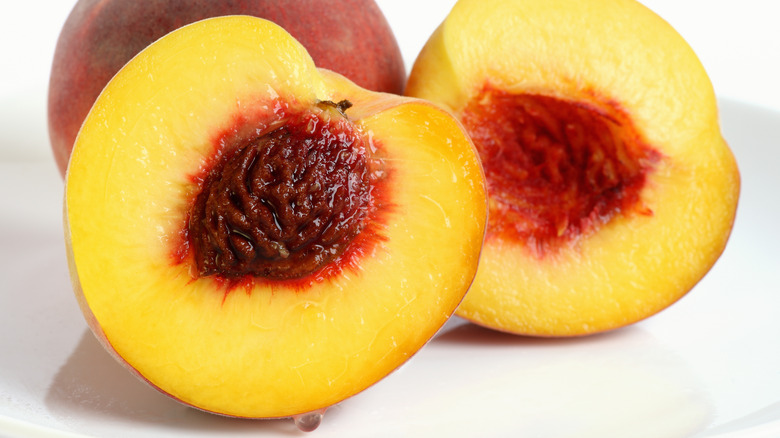The Best Variety Of Peach For Homemade Cobbler
Few things announce the height of summer as much as a delicious, ripe peach. Whether they are eaten raw in slices, made into fresh bellini cocktails, or baked, there are so many great ways to enjoy the fruits of summer, and quite literally too. Although there are a lot of great peach recipes out there, peach cobbler is a classic that people have been drawn to time and time again. But what type of peach should you be using when making cobbler at home?
Not many people realize that there are three major kinds of peach: Clingstone, freestone, and semi-freestone. The big difference between each type is the way the fruit's flesh clings to the stony pit. Clingstone flesh is tightly attached while freestone flesh comes away from the pit loosely and easily. Semi-freestone flesh, meanwhile, is somewhere in between. As such, freestone peaches are the better choice, not just when preparing cobbler, but in many types of cooking.
As the name implies, cobbler is a dessert that is cobbled together. The classic cobbler recipe is fairly simple and straightforward, combining layers of dough and fruit together into a tasty, timeless treat. Understanding different types of peaches and their uses in the kitchen will make baking a cobbler even easier.
Picking the right peach
Freestone peaches are great for making homemade cobbler because the pit is super easy to remove. However, picking them out at the grocery store or farmers' market might be hard at first glance. Fortunately, freestone peaches tend to be more commonly and widely sold in stores so the chances of getting a freestone instead of a clingstone is notably higher.
For those who would rather not take the chance and want to be certain they are getting the freestone variety, there are a few ways to tell. Freestone peaches tend to be somewhat larger than clingstone peaches. They are also riper later in the peach season than clingstone, sometimes remaining in stores at peak ripeness as late as September.
Freestone peaches are easier to cut and cook with, but it is important to note that they are not as sweet or juicy as their clingstone counterparts. This is where semi-freestone peaches come in handy. Their hybridization combines the easier removal of the pit with sweeter and juicier flesh. However, they are also harder to find in stores so for the sake of convenience, it is best to use freestone peaches when making homemade cobbler.

